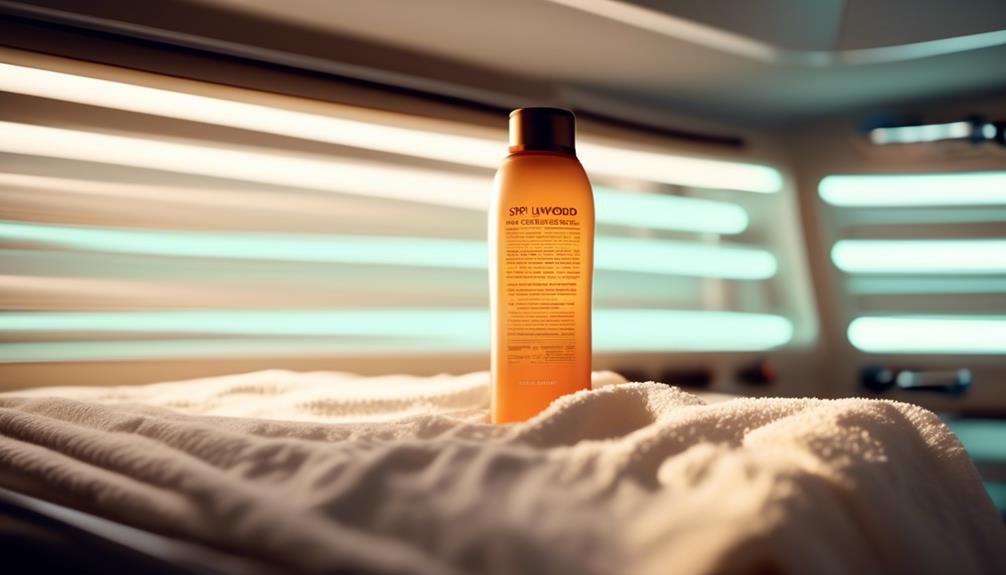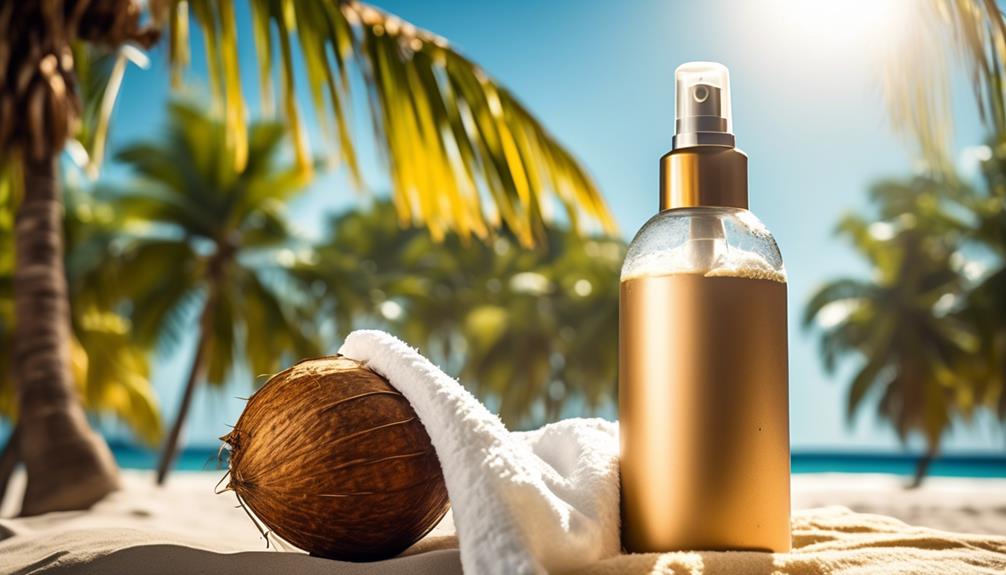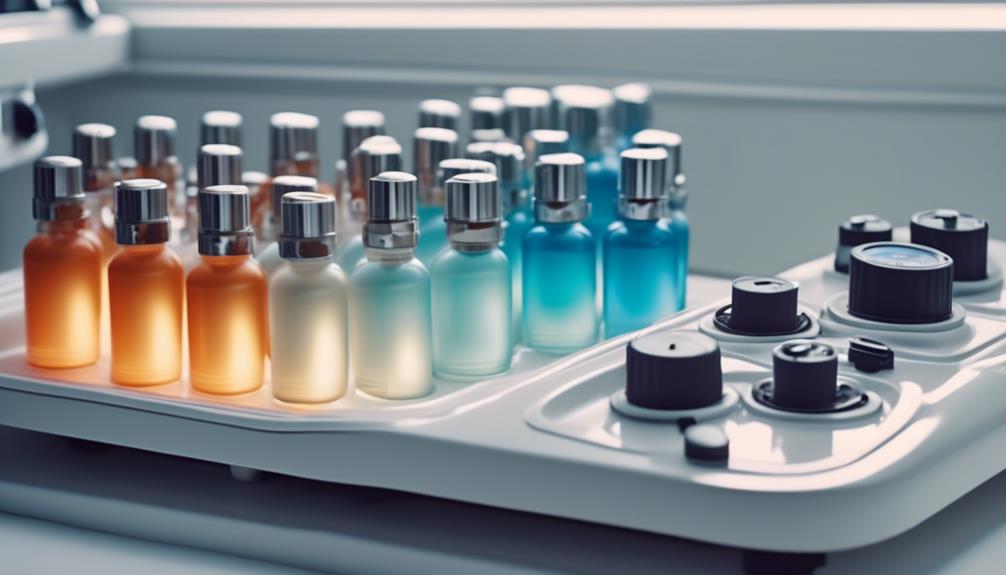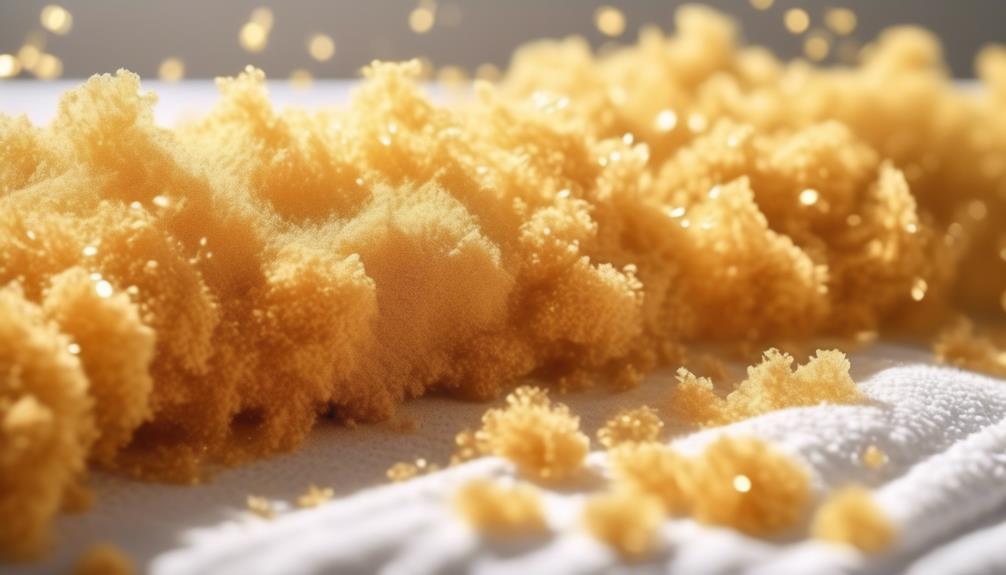Finding the right tanning bed for you is similar to choosing your favorite coffee blend – it’s all about personalization and understanding what works best for your skin.
You’ve probably heard the buzz about spacing out those UV sessions, but let’s break it down: your skin’s got its own vibe, and rushing the tanning process can be a major no-no. If you’re rocking fair skin, you’re like that delicate, light roast that needs its space between brews.
On the flip side, if you’re blessed with a deeper tone, you’re more of a robust espresso that can handle the heat a bit more frequently. But here’s the kicker, no matter your skin’s base note, the key to a flawless tan is tuning in to its rhythm.
So, why exactly should you march to the beat of your own tanning drum? Stick around, and let’s unveil the secrets to keeping your glow game strong, without playing with fire.
Key Takeaways
- Skin type determines the amount of UV exposure you can handle, so it is important to customize your tanning schedule accordingly.
- Gradual and controlled exposure to UV light helps develop a tan without burning and allows the skin to build up melanin for a deeper, more even tan.
- Start with shorter tanning sessions and gradually increase the number of sessions per week to avoid overexposure and prevent skin damage.
- Pay attention to your skin’s reactions, such as stinging or redness, and adjust the tanning intensity accordingly. It is crucial to protect the skin and avoid excessive UV exposure.
Identifying Your Skin Type
Before you hit the tanning bed, let’s figure out where you land on the Fitzpatrick Scale to tailor your glow-up game plan. Knowing your skin type is key to acing the tanning game without playing with fire—literally. Skin types range from I to VI, and trust me, you don’t want to eyeball this.
To determine your skin type, think about how your skin usually reacts to Mr. Sun. Does your skin throw a fit and burn, or does it bronze like a boss? If you’re the former, you’re probably on the fair end of the scale, while the latter might mean you’ve got a darker skin vibe going on.
Now, why’s this so crucial? Well, indoor tanning sessions aren’t a one-size-fits-all situation. Your type dictates the UV love you can handle. Use this intel to help pace your tanning rendezvous. We’re talking slow and steady to build that radiant tan without turning lobster-red. And remember, more isn’t always better. Overdoing it can cause your skin to throw a major tantrum.
Understanding Melanin Production
Make sure you know your skin type and how your melanin works as your natural defense against the sun.
Everyone’s melanin levels are different, so your approach to getting a tan should be tailored to your specific needs.
Melanin’s Role Explained
When you use a tanning bed, your skin produces melanin, the natural pigment that creates a golden glow. Melanocytes, the cells responsible for producing melanin, are activated by ultraviolet light in the bed.
This light stimulates your skin to produce melanin, which acts as a shield against sun damage.
But chill, you’ve gotta take it slow. If your skin starts to sting, that’s your cue to step away. To develop a tan gradually, you gotta oxidize the melanin just right—no rush job. Remember, indoor tanning equipment only emits specific UV rays, so follow the pro tips to avoid an overcooked look.
Skin Type Variations
Understanding how your skin type affects melanin production can be a game-changer for nailing that perfect tan without risking a burn. Your skin type will help determine optimum exposure and ensure you’re vibing with your tanning sessions safely.
Here’s a quick rundown:
- Skin Type Variations: Types range from Type I, light skin that burns easily, to Type VI, dark skin that tans deeply.
- Tailoring Tans: Indoor tanning professionals recommend customizing your tanning schedule based on your skin’s needs.
- Starting Slow: Gradually increase the number of tanning sessions a week, allowing your skin to adapt.
- Listening to Your Skin: A tanning schedule recommended for your skin type helps avoid overexposure and nurtures that glow.
Customizing Session Frequency
Let’s discuss how frequently you should use the tanning bed.
It’s all about listening to your skin and finding that sweet spot between sessions to keep it golden without overdoing it.
Understanding Skin Sensitivity
You’ve gotta know your skin type because it’s key to nailing the perfect tanning bed routine without frying to a crisp. Honestly, UV exposure can cause some serious ouch if you’re not careful, especially if you’re the type with skin that burns immediately.
Here’s some important points:
- Know Your Skin: If you’re fair-skinned, we’re talking shorter, chiller sessions to help protect your skin.
- UV 101: Consider the UV strength and output of the bed—Consult the facility’s staff for what’s recommended for your skin.
- Build It Up: Start with shorter sessions and gradually increase as your skin develops a tan.
- Listen to Your Skin: It’ll tell you what’s up. Too much exposure to the ultraviolet rays ain’t a joke, so keep it safe, okay?
Optimal Exposure Intervals
Find the optimal tanning time that works best for your skin to achieve a glowing tan without any discomfort. Your skin is unique and should be treated with care at the tanning salon.
To avoid skin damage, you’ve gotta play it cool with the UV exposure. We’re talking incremental exposure times that vibe with your skin type.
Start by building a base tan at indoor tanning beds, but keep those sessions spaced. Your tanning schedule should include optimal exposure intervals—trust me, your skin will thank you.
If you’re a tanning newbie or a seasoned bronzed goddess, respect the rules of the tan game. It’s not just about the #TanLife; it’s about the #SmartTanLife. Stay golden but stay safe, okay?
Avoiding Overexposure Risks
To keep your glow game strong without the burn, start by pinpointing your skin type on the Fitzpatrick Scale—it’s key to tailoring your tan sessions just right. Whether you’re a porcelain princess or a bronzed babe, avoiding skin damage is a must.
Here’s the deal:
- Start Slow: Jumping into long exposure times is a no-go. Begin with short indoor tanning sessions and listen to your skin—any prickling or stinging sensations are red flags.
- Build Gradually: Incremental exposure times are your BFF. As your tan deepens, you can slowly increase the UV exposure, but always keep it gentle.
- Space It Out: Your tanning schedule should be like your social life—exciting but not overcrowded. Depending on your skin type, space out those indoor tanning sessions to keep overexposure at bay.
- Never Double Dip: Hitting up the indoor tanning equipment more than once a day? Forget about it. Balance is key, and overdoing it’s just asking for trouble.
Maximizing Tanning Results
While keeping overexposure in check is crucial, let’s focus on how to amp up your tan’s intensity and stay gorgeously golden. You wanna rock that good indoor tan? Start by mapping out a tanning schedule using incremental exposure times. This approach helps your skin develop that rich hue tan gradually without burning. It’s all about the slow and steady glow-up!
Immerse yourself in the warm glow of your favorite indoor tanning spot, basking in those UV-A rays to get that perfect tan sans the outdoor sun. But remember, don’t overstay your welcome under the lights! Find that sweet spot and exit gracefully to avoid turning from luxe to lobster.
Check out this table for a visual guide on how to slay your tanning game:
| Session | Exposure Time | Result |
|---|---|---|
| 1st | Short & Sweet | Base Tan |
| 2nd | Slightly More | Deepening Glow |
| 3rd | Peak Chic | Ultimate Bronze |
Incorporating Rest Periods
Hitting the pause button and chilling for at least 48 hours between your tanning sessions is key to keeping that skin happy and your tan on point. Those rest periods are like little vacays for your skin, giving it time to recover and soak up all the glowy benefits without the burnout.
Here’s some tips on why you gotta space it out:
- Skin Healing: Those hours between tanning sessions let your skin repair and build up melanin, which means a deeper, more even tan.
- Incremental Exposure: Ease into that bronzed look with a tanning schedule that gradually ups exposure times, making sure your skin tans without turning lobster-red.
- Listen to Your Body: If your skin’s whispering (or screaming) for a break. Going too long between indoor tanning can be just as bad as not waiting long enough.
- Tailored Tanning: Tune into your skin type and avoid skin drama by customizing your tan plan for safe tanning that’s all about you.
Adapting to Skin Reactions
Listening to your skin and tweaking your tan game to avoid those ‘ouch’ moments is key to a flawless glow-up. Every skin type has its own vibe when it comes to handling UV exposure. You’ve gotta respect that uniqueness. If you’re seeing some skin reactions, like a little stinging or a not-so-cute redness, it’s your skin’s way of saying, “let’s dial it back a bit.”
| Skin Type | Reaction | Action |
|---|---|---|
| Type I | Burning | Pause and soothe |
| Type II | Redness | Shorten exposure times |
| Type III | Tingles | Gradually increase tanning sessions |
| Type IV | Slight tan | Maintain current exposure |
| Type V & VI | Deepening tan | Keep it steady, but stay watchful |
Extending Tan Longevity
To keep that golden glow going strong, first figure out where you land on the Fitzpatrick Scale and tailor your tanning timetable to match. If you’re all about that sun-kissed look year-round, you’re gonna want to know how to extend your tan without having to rely solely on outdoor sun.
Here’s a straight-up guide to keeping that radiance rockin’:
- Start Slow: Kick off your tanning sessions with a gentle approach. Gradually increase your UV exposure to let your melanocytes step up their game without freaking out.
- Balance is Key: Depending on your skin type, find that sweet spot in your weekly routine. Not too much, not too little – you’re aiming for just right to maintain that bronzed bod.
- Tan Smart: Protect your glow-up by using professional tan extenders. These babies are designed to keep your melanin on point and your tan longevity on lock.
- Prep Work: Exfoliate your skin 24 hours pre-tan. Scrub off those dead skin cells to ensure an even canvas for a tan that’s gonna stick around.
Preventing Skin Damage
While you’re upping your tan game, don’t forget that protecting your skin from damage is just as crucial as achieving that perfect bronze. Overdoing it with the UV exposure can cause skin woes you definitely don’t want. So, let’s keep it real and avoid skin drama by spacing out those tanning sessions, alright?
The US Food and Drug Administration (FDA) is pretty clear about the risks of too much UV love. Indoor tanning facilities are required to start all new customers with a skin type assessment. You’ve gotta slowly and gradually increase your tanning time to keep your skin in check. Here’s a quick table to help you out:
| Skin Type | Recommended Start Time | Max Sessions/Week |
|---|---|---|
| Type I | Consult a professional | 1-2 |
| Type II | 3-5 minutes | 2-3 |
| Type III | 5-7 minutes | 3-4 |
| Type IV | 7-10 minutes | 4-5 |
| Type V-VI | 10-13 minutes | 5-6 |
Frequently Asked Questions
Do Sunbeds Work on All Skin Types?
Sunbeds work on all skin types, but they are not universally suitable.
Your skin’s vibe – whether it’s fair maiden or bronzed goddess – means you’ve gotta customize those tanning sessions. Keep it chill and don’t rush the glow-up; respect your skin’s unique story.
Listen closely to its needs, and you’ll keep that tan fierce without playing with fire. Know your skin, love your skin, and tan wisely.
How Do I Know My Skin Type for Tanning?
To figure out your skin type for that perfect glow, grab a Fitzpatrick Scale chart online. It’s like a quiz where you match your skin’s reaction to the sun with the scale’s categories. You’ll land somewhere from Type I, super fair, to Type VI, deeply pigmented.
Knowing this helps you tan smarter, not harder. Keep your skin game strong by staying hydrated and moisturized, and you’ll be rocking that sun-kissed look in no time!
Can You Tan With Type 2 Skin?
You can totally get your glow on with type 2 skin, but it’s like walking a tightrope—balance is key. Start slow, and don’t rush your skin into a bronze overload.
Maintain a relaxed approach with brief, spaced-out intervals, and ensure you drink plenty of water. Your skin is indicating a need for care, so pay attention and moisturize diligently.
You’ll be rocking that sun-kissed look safely in no time!
How Long Should I Wait Between Tanning Sessions?
Aim for at least 24 to 48 hours to let your skin recover. This wait time helps minimize risks and keeps that glow going strong. Don’t rush it—patience is key!
And always keep your skin game on point with hydration and moisturizer. Stay safe and slay that tan!




